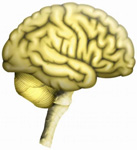The adult brain can change, confirms study

Washington, Sept 6 : Scientists have for long debated whether the adult brain has the ability to change like the child's brain. Now, a new study has confirmed that this does indeed happen.
Neuroscientists have used converging evidence to explain that the adult visual cortex does indeed reorganize and the change affects visual observation.
The researchers from MIT and Johns Hopkins University believe that as scientists find ways to use this adaptive ability, the work could have relevance to topics ranging from learning to designing interventions for improving recovery following stroke, brain injury, or visual disorders.
Animal studies conducted two decades ago using single cell recording of neurons found that the adult animal brain can change, but shed little information about the adult human brain. In 2005, a functional magnetic resonance imaging (fMRI) study led by Professor Nancy Kanwisher at the McGovern Institute for Brain Research at MIT found evidence of plasticity in the visual cortex of adults with macular degeneration, an eye disease that deprives regions of the cortex of visual information.
But another fMRI study of macular degeneration found no such evidence, and an animal study using both single cell recordings and fMRI also questioned the 20-year-old animal work.
Lead author Daniel Dilks, a postdoctoral associate in Kanwisher's lab who conducted the current work while a graduate student at Johns Hopkins in senior author Michael McCloskey's lab, jumped into the fray when he found BL, a stroke patient.
BL's stroke damaged the optic radiation fibers, which transmit information from the eye to the primary visual cortex, but the cortex itself remained intact. The damage eliminated input from the upper left visual field to the corresponding region of the primary visual cortex, thereby depriving a region of cortex and creating a blind area in the upper left visual field.
The researchers wanted to find out what happened to that deprived piece of cortex.
"We discovered that it took on new functional properties, and BL sees differently as a consequence of that cortical reorganization," explains Dilks.
BL had reported that things "looked distorted" in the lower left visual field (below his blind area). The researchers hypothesized that the distortions resulted from cortical reorganization in the deprived cortex. To isolate that distortion, they had BL fixate on a center dot while objects, such as squares, appeared in various parts of the visual field. As expected, BL saw nothing when a square appeared in his blind area.
But when the square appeared just below the blind area, he perceived the square as a rectangle extending upwards into the blind area.
Likewise, he saw triangles as "pencil-like", and circles as "cigar-like".
Subsequent fMRI studies confirmed that the visually deprived cortex (representing the upper left visual field) was responding to information
coming from the lower left visual field. The deprived cortex assumed new properties, a hallmark of plasticity, and that explained the visual
distortions.
The study appeared online Sept. 5 in an advance publication of the Journal of Neuroscience. (With Inputs from ANI)